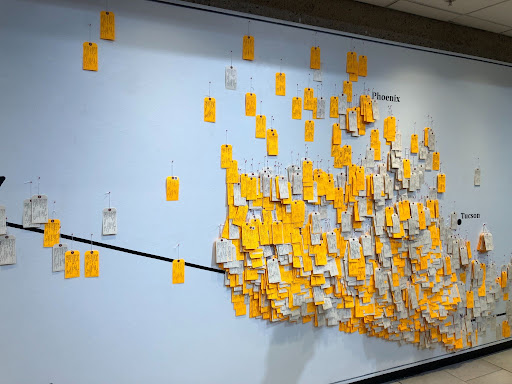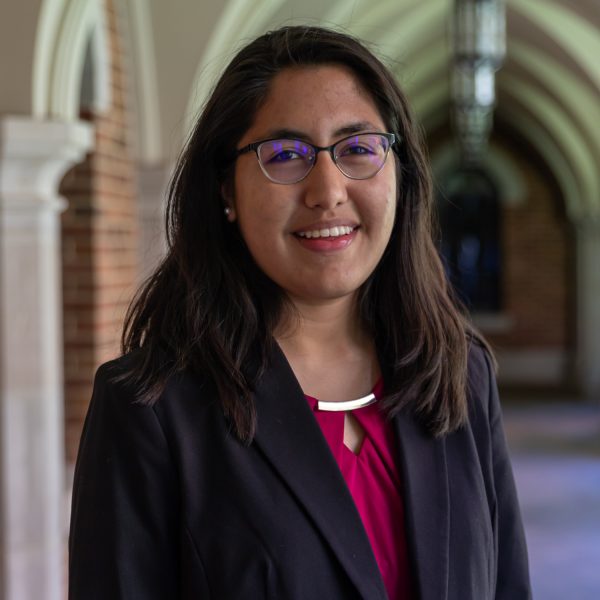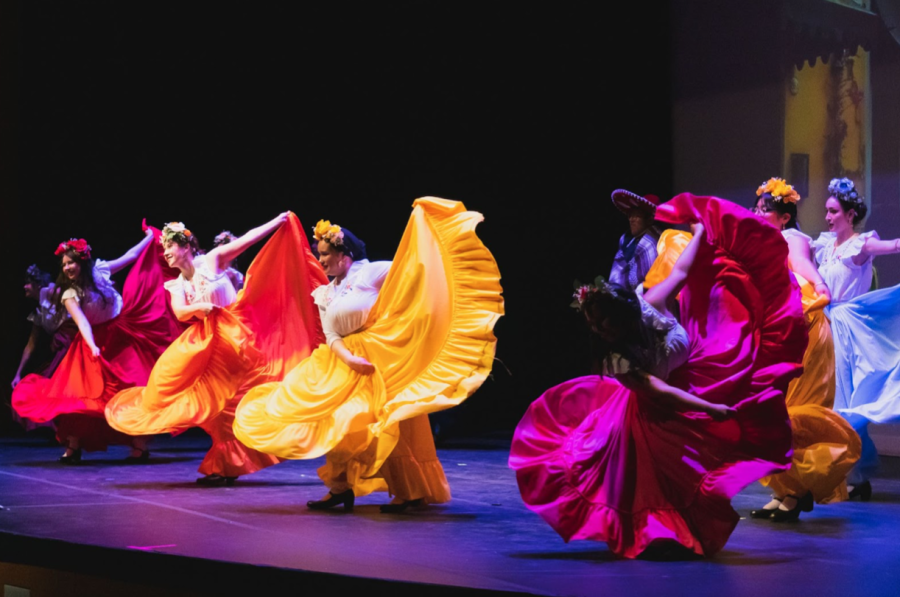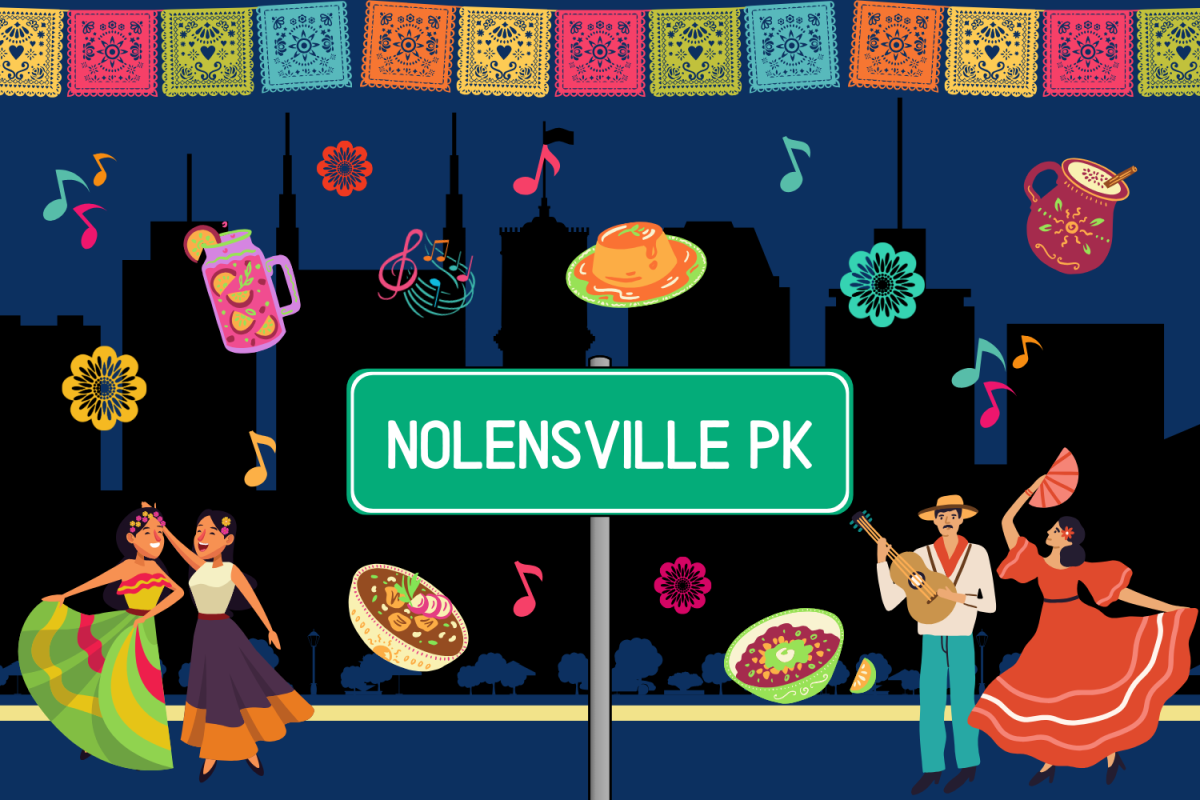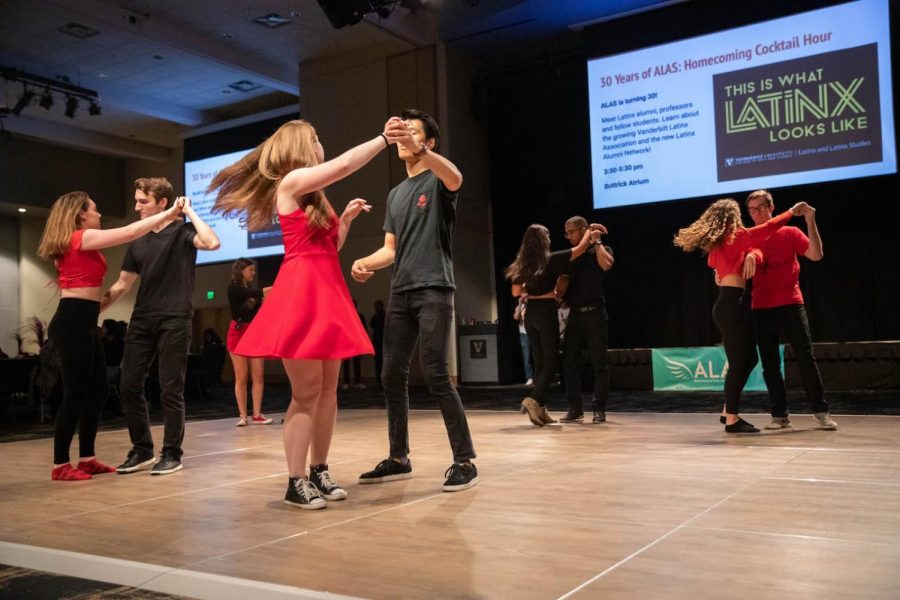Dr. Jason De León, creator of the Hostile Terrain 94 participatory art exhibit and founding director of the Undocumented Migration Project, visited Vanderbilt on Sept. 29.
Vanderbilt is one of the over 120 venues for Hostile Terrain 94, which was scheduled to be showcased last fall but was delayed due to the COVID-19 pandemic.
The reception lasted from 5:15-6 p.m. CDT, during which members of the Vanderbilt community and the public had the opportunity to view De León’s Hostile Terrain 94, an art exhibit featuring handwritten toe tags hung on a wall in Sarratt Gallery. The exhibition hinges on the study of “Prevention Through Deterrence” (PTD), a set of official U.S. policies implemented in 1994. PTD attempted to dissuade migrants from illegally crossing at the U.S. southern border by channeling crossings into the “hostile terrain” of the border wilderness.
Each tag represents one migrant death in the Sonoran Desert region and is geolocated onto a large wall map of the Arizona-Mexico border. The approximately 3,200 tags, which were filled out by Vanderbilt and Nashville volunteers, contain the names, ages and causes of death of the deceased. Orange tags indicate identified remains, while manilla tags represent the nearly 1,000 unidentified remains gathered between 2000 and 2020.
While the future home of the tags has not yet been decided, Department of Anthropology Chair Tiffiny Tung shared that some may be cremated on Día de los Muertos to honor the lives lost at the border. De León also expressed his desire for a few tags from each location to be included in a permanent memorial.
Eager to attend the event after seeing it on Vanderbilt’s Hispanic Heritage Month calendar, first-year Salwa Daouk reflected on the exhibit’s lasting effect.
“It was definitely eye-opening, and just looking at the tags of all the people that died while crossing the border gave me chills,” Daouk said. “We’ll never know who they were or what their stories were. All we have are these [mostly] nameless tags.”
First-year Hayley Singkhek echoed Daouk’s sentiments, explaining that the physical exhibit amplified what she experienced from reading De León’s book, The Land of Open Graves: Living and Dying on the Migrant Trail, in her anthropology class.
“Reading the book itself was heart-wrenching—it was a lot, emotionally and mentally, to get through,” Singkhek said. “Seeing the actual materialized version of what we read about was even more disturbing.”
Tung, who helped organize De León’s visit, expressed hope that Hostile Terrain 94 would spark meaningful change among its audience.
“It brings forth a lot of emotion: sadness, anger, frustration. As you read about it and reflect on it, the hope is that it moves you to resolve, to act, to transform what is happening here,” Tung said. “That’s what art and anthropology should do—it should spur you to think about the role you can play in transforming society.”
According to Tung, the idea to host the exhibition at Vanderbilt came in 2019 when De León gave a talk to the Department of Anthropology.
“We realized this would be something really important for him to contribute to and help educate the Vanderbilt students about the crisis at the border,” she said. “A lot of people don’t realize how U.S. policy has created this very deadly landscape.”
De León gave a lecture immediately following the reception, in which he argued that migrant deaths are an intentional consequence of PTD. He stated that Hostile Terrain 94 serves to bring awareness to the effects of this policy on migrant communities as well as to memorialize those who have died as a result of PTD.
Celso Castilho, director of the Center for Latin American, Caribbean, and Latinx Studies (CLACX), reported that 14 classes, eight Vanderbilt groups and seven Nashville community groups have visited the exhibit since it opened on Sept. 9. Castilho said he views Hostile Terrain 94 as a starting point for conversations about immigration policy.
“It’s important that Vanderbilt is connected to these larger conversations, and that these larger conversations are happening in the South,” Castilho said. “This [exhibition] is the most satisfying initiative I have been involved with here at Vanderbilt in my last 13 years. It has been incredibly moving [and] incredibly powerful.”
Zachary Feldman co-reported on this piece.

